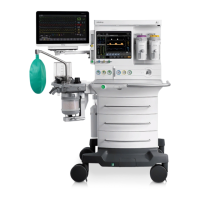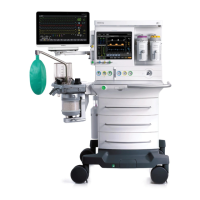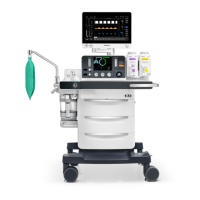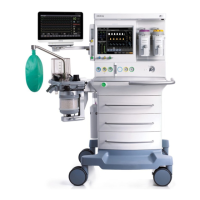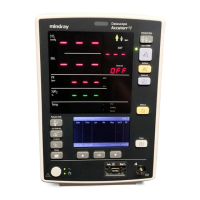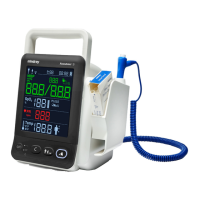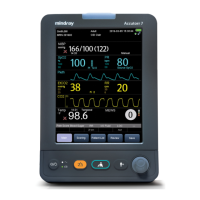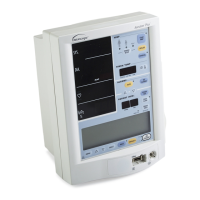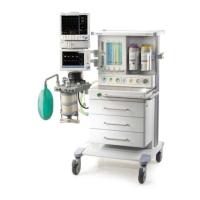7-7
3. If the problem persists, re-plug
the VCM (refer to 8.6.2), and
reconnect the cable between the
backplane and display.
4. If the problem persists, replace
the monitoring and controlling
assembly (refer to 11.1.11).
VCM self-test:
Error/VCM
self-test: Failed
High
1. An error occurs to the
CPU, RAM, WTD, or
EEPROM.
2. After power-on, the CPU
board cannot communicate
with the VCM.
1. Power on the machine again for
a self-test.
2. If the problem persists, re-plug
the VCM (refer to 8.6.2).
3. If the problem persists, replace
the monitoring and controlling
assembly (refer to 11.1.11).
VCM self-test:
Timeout
High
The self-test result cannot be
obtained due to the internal
communication error.
1. Power on the machine again for
a self-test.
2. If the status screen has a
communication stop alarm, or
encounters the black or blank
screen error, rectify the fault of the
status screen first (refer to 7.2.1
and 7.3.2).
3. If the problem persists, re-plug
the VCM (refer to 8.6.2), and
reconnect the cable between the
backplane and display.
4. If the problem persists, replace
the monitoring and controlling
assembly (refer to 11.1.11).
PEEP valve
failure/PEEP valve:
Failed
Med
The PEEP valve voltage is
in error.
The PEEP valve pressure is
in error.
1. Power on the machine again for
a self-test.
2. If the power board has a voltage
error alarm, clear this alarm (refer
to 7.3.3).
3. Select Setup > Service > Data
Monitors > PEEP Valve to run a
PEEP valve test. If the test fails,
replace the drive gas assembly
(refer to 11.1.17).
4. If the PEEP valve test is passed,
check whether the PEEP valve or
PEEP pressure sensor is faulty by
referring to 7.6.3.
5. If the pressure sensor is faulty,
perform the pressure sensor
calibration (refer to 6.3.5).
6. If the calibration fails, replace
the sensor adapter board (refer to
11.1.16).
7. If the problem persists, replace
the monitoring and controlling
assembly (refer to 11.1.11).

